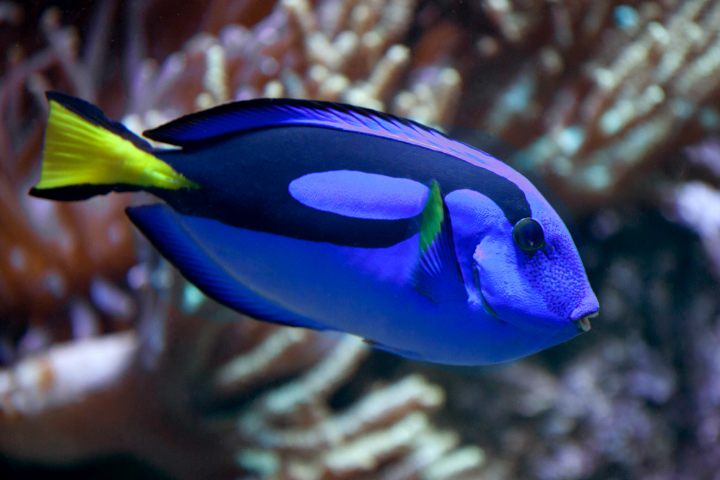What kind of fish is Dory in Finding Nemo?
What would Dory do about this question? She has a short-term memory, so she might have problems knowing what kind of fish she is, don’t you think? Anyways, she’s cute, she’s funny and her journey is kinda’ inspirational.
What kind of fish is Dory?
Dory is Paracanthurus hepatus, or better known as Pacific blue tang fish. Pacific tang fish is not always blue. It can also appear to be white or violet when at night, for example. It needs light to shine and reflect its pigmentation. And, moreover, when Dory was young, she should have been yellow, not blue.

A Blue Tang’s meal consists of algae. If you want, they are in charge of keeping the coral reef nice and clean. The blue tangs are tropical fish, found in the environments close to the equator and they have never successfully been bred in commercial aquariums. The Paracanthurus hepatus can weigh around 600 g, with males being generally larger than females. Hence, you can check out Merritt Supply to see if you can check out these sea creatures. They live in the reefs of Philippines, Indonesia, Japan, the Great Barrier Reef of Australia, New Caledonia, Samoa, East Africa, and Sri Lanka. They usually group in small groups of 8 to 14 individuals and live together as a family.
They are usually captured with cyanide. Yes, you’ve heard that well, with poison which also endangers the whole marine environment, from the water itself to the coral reefs, fish and so on. As in the “100 Dalmatians case”, when people were buying Dalmatians just because of the movie, the fish Dory became the center of attention for the movie fans who tried to put their hands on a real one. The problem is, the real Dory is an almost one foot long fish which can be even aggressive towards other fish and which is mostly laced with cyanide. So, just don’t do that!
There are awesome things about Dory, though – the real Dory. In the movie, we know that she has short term memory loss and that it runs in her family. This fact alone makes Dory really cute and adorable, but there is more to it than meets the eye. The real fish Dory has no problems of that sort. There are no sustainable studies to show that fish can experience short-term memory loss and the funny thing is that there are some which prove the exact opposite: fish can keep a memory for months. For example, carp can link a sound to a certain type of food and then keep it in its memory for up to 5 months. How about that, Dory?
You’ve probably heard this before: fish can be trained. After several training sessions, they can learn to identify certain patterns and lights or sounds. The royal blue tang was never studied specifically, so we cannot say much about this specific breed, but we can make the assumption that he has some of the good memory characteristics of its peers.
Dory comes from the family of the surgeonfish
As we have mentioned above, the real Dory has a very important task: keeping the oceans healthy. She and her peers feed on the algae that grow on the coral reefs and thus preventing it from growing too much and chocking the beautiful coral to death. They are like little cute surgeons doing their jobs continuously for a healthier and more beautiful ocean.
You could say from the movie that Dory was special, right? She’s also adorable, fun, heart-warming and she deserves all the love in the world, as should the real-life Dory. The Blue Tang fish is not to be held in captivity, killed with cyanide or just kept as a pet. Let Dory be free! Dory deserves it!
